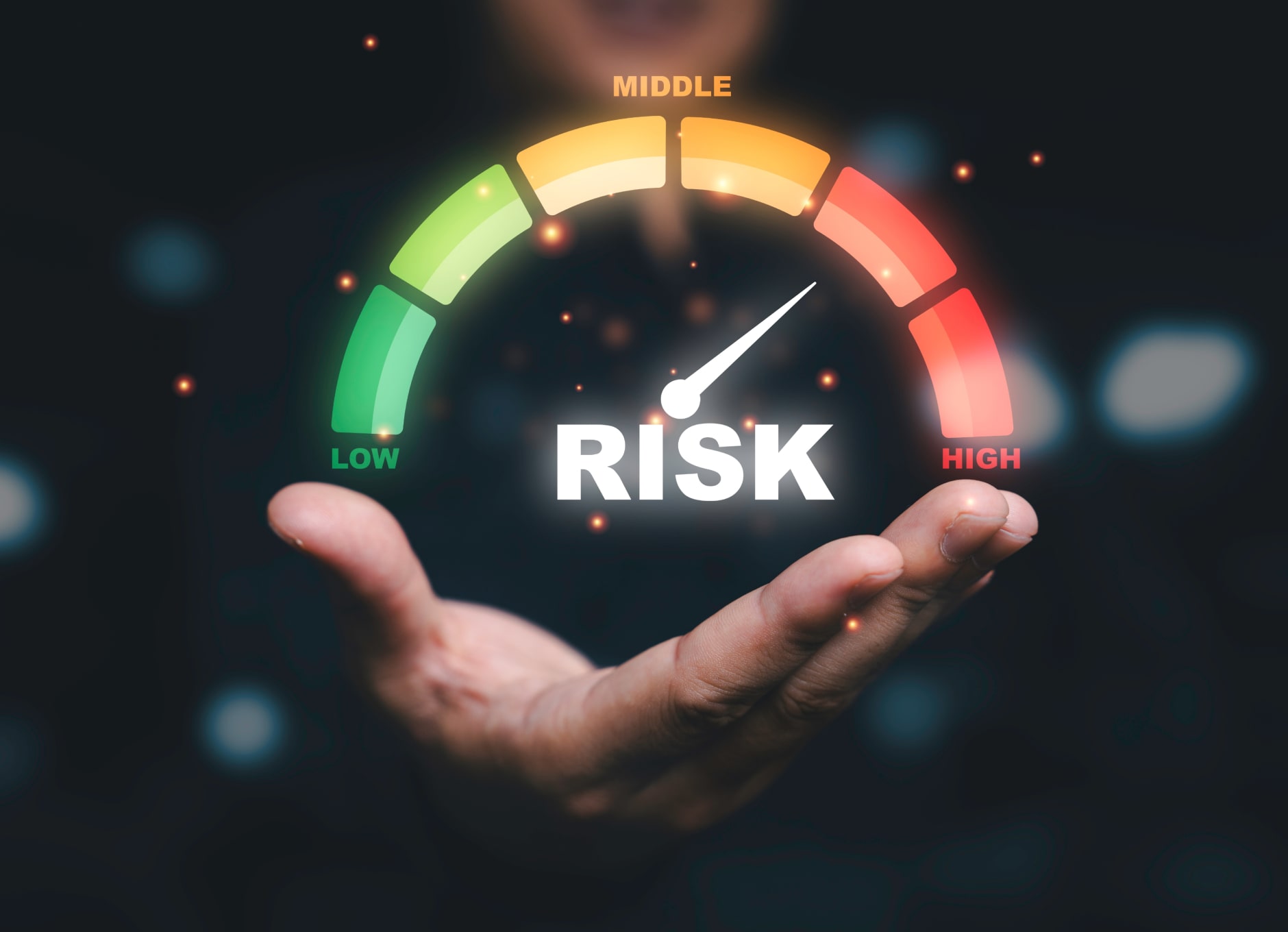High-Risk Businesses: Common Issues and Solutions
Explore common problems in the high-risk business industry and how to resolve them.
Any merchant has probably heard of high-risk businesses. As the name suggests, they face a range of unique challenges. But what are these issues, and why are some businesses considered high-risk while others are not? In this article, we explore what factors contribute to a high-risk business marker, which industries often fall in this sector, the issues that high-risk merchants frequently face, and solutions to these problems.

What are High-Risk Businesses?
High-risk businesses are more likely to experience financial instability, making them less attractive to investors seeking strong returns. Several factors contribute to a business's risk level. For example, a low-risk business might have lower monthly sales and transaction volumes, operate in a single currency, avoid recurring payments, be located in a low-risk region, and sell relatively stable goods like books or office supplies.
On the other hand, a high-risk business might have higher sales and transaction volumes, accept multiple currencies, offer recurring payments, operate in a high-risk region, and sell products associated with higher chargeback rates, such as digital technology or software. Financial institutions evaluate these operational details to determine a business's risk profile.
Common High-Risk Industries
Certain industries are statistically more likely to be classified as "high-risk" due to a confluence of factors, including regulatory complexities, higher rates of fraud and chargebacks, reputational concerns, and financial volatility. While the specific criteria for determining "high-risk" can vary between financial institutions and payment processors, the following industries frequently appear on such lists:
-
Financial services and payments.
These businesses, often serving vulnerable clients, carry a higher risk due to the uncertainty of customer repayment. -
Adult entertainment and online gaming.
These industries may face reputational risks and are susceptible to changing trends and regulations. -
Pharmaceuticals and healthcare.
Strict compliance requirements in these sectors can pose a significant risk to investors. -
Cryptocurrency and blockchain.
The volatile nature of cryptocurrencies presents a high financial risk. -
Arms dealers and military contractors.
These industries are considered high-risk because of their potential reputational damage and vulnerability to unpredictable global events. -
Environmental and waste management.
Businesses in these sectors, particularly those utilizing emerging technologies, may have longer timelines for return on investment, making them high-risk for some investors.
Businesses in these high-risk industries must implement robust risk management strategies to mitigate potential challenges and ensure long-term sustainability. If proactive measures aren’t taken, there’s a high chance of financial losses and slower business development, as challenges of high-risk industries can become a deal-breaker for many investors.

Common Problems of High-Risk Businesses
Businesses deemed "high-risk" encounter distinct operational and financial challenges that can significantly hinder their success. These hurdles often stem from the specific nature of the industry, target market, or business practices and require careful navigation to ensure sustainability and profitability. Here, we present a list of the most common problems in the high-risk industry sector.
Navigating Complex Regulatory Landscapes
High-risk businesses often operate within heavily regulated industries, facing a tangled web of legal restrictions, industry-specific guidelines, and cross-border protocols. Maintaining compliance can be a constant struggle, requiring significant resources and expertise to navigate the ever-changing regulatory environment. Businesses must adhere to current laws and make necessary changes to adjust to the new legal landscape, which can be challenging.
Managing Chargebacks and Disputes
Chargebacks pose a significant threat to high-risk businesses. Higher transaction volumes, coupled with the nature of the goods or services offered, can lead to increased disputes. Effectively managing these chargebacks is crucial. This involves not only resolving disputes promptly and fairly but also implementing preventative measures to minimize future chargebacks, such as robust fraud detection systems and clear communication with customers. Uncontrolled chargebacks can lead to substantial financial losses, damage reputation, and even jeopardize the business's ability to process payments.
Mitigating Security Concerns and Fraud Risks
High-risk businesses are often attractive targets for cybercriminals and fraudsters. The online nature of many high-risk businesses, coupled with the sensitive data they handle, makes them vulnerable to various threats, including data breaches, identity theft, and payment fraud. The protection of the personal information of the clients and company is a never-ending battle. This requires investing in robust security systems, implementing multi-layered security protocols, and staying up-to-date on the latest security threats and best practices. A merchant failing to manage the risks can result in substantial financial losses, legal repercussions, and even bankruptcy.
Establishing and Maintaining Trust
Building trust is a tough challenge for high-risk businesses. Operating in industries often associated with skepticism or controversy requires consistent effort to gain the confidence of customers, partners, and financial institutions. This can involve proactive communication, secure transaction processing, and readily available customer support. High-risk businesses can struggle to attract and retain customers, secure partnerships, and access necessary financial services without trust.
Solutions for High-Risk Business Issues
While high-risk businesses face significant challenges, strategic planning and proactive measures can overcome these obstacles. Here, we explain how merchants can protect their businesses with proactive tactics, ensuring stable company growth with minimal financial risks.
Invest in Specialized Expertise
Navigating the complex regulatory landscape requires specialized knowledge. Don't hesitate to invest in expert guidance from legal and compliance professionals specializing in your specific industry. Experts in law and compliance can help you follow all the rules, avoiding legal trouble and making operations smoother. This lets you focus on more critical tasks, enhancing your team's productivity. Regular consultations and updates from these experts are crucial to staying ahead of any regulatory changes.
Implement Anti-Chargeback Tactics
Chargebacks are a common issue for any business; however, this complicated problem must not be ignored. A multifaceted approach is required to mitigate the risks caused by chargebacks. Begin with real-time transaction monitoring to identify suspicious activity and potential chargebacks early on. Establish a clear process for addressing customer concerns promptly and professionally, aiming to resolve issues before they escalate into chargebacks. Implement preventative measures, such as robust fraud detection systems, transparent and easily accessible refund policies, and secure payment gateways. Analyze chargeback data to identify trends and vulnerabilities, allowing you to refine your prevention strategies over time. Consider utilizing chargeback management tools like the ones available within Germius to streamline the process and minimize losses.
Cultivate Trust Through Transparency and Communication
Building trust is paramount for high-risk businesses. Proactively address any concerns or complaints promptly and professionally. Clear and concise communication is key. Ensure your website and marketing materials clearly outline your shipping, return, and refund policies, as well as any additional costs or fees. Support communication with your clients. Respond to inquiries quickly and provide helpful advice to enhance customer trust, strengthen your business's reputation, and minimize customer churn.
Enhance Cybersecurity
Cybersecurity is crucial for all businesses, especially high-risk ones. It's not just an IT concern but a core business need. Protect your data and transactions by investing in strong security measures like firewalls, intrusion detection, and encryption. Keep your systems updated and train your team on best practices like password security and phishing awareness. Regular security checks are essential to finding and fixing weaknesses. Strong cybersecurity protects your business and builds customer trust.
By diligently addressing these key areas, high-risk businesses can mitigate their inherent vulnerabilities and create a foundation for sustainable growth. A proactive approach will ensure a good reputation, control financial losses, and secure the company's market position.
Conclusion
High-risk businesses come with unique challenges. Taking a proactive approach is key in a high-risk industry. Implementing protective tactics to safeguard your business, protect its reputation, and avoid unnecessary expenses and legal repercussions is essential. By nurturing customer-company relationships and investing in specialized expertise, chargeback prevention tools, and cybersecurity practices, you can ensure the stable development of your company and its longevity.


